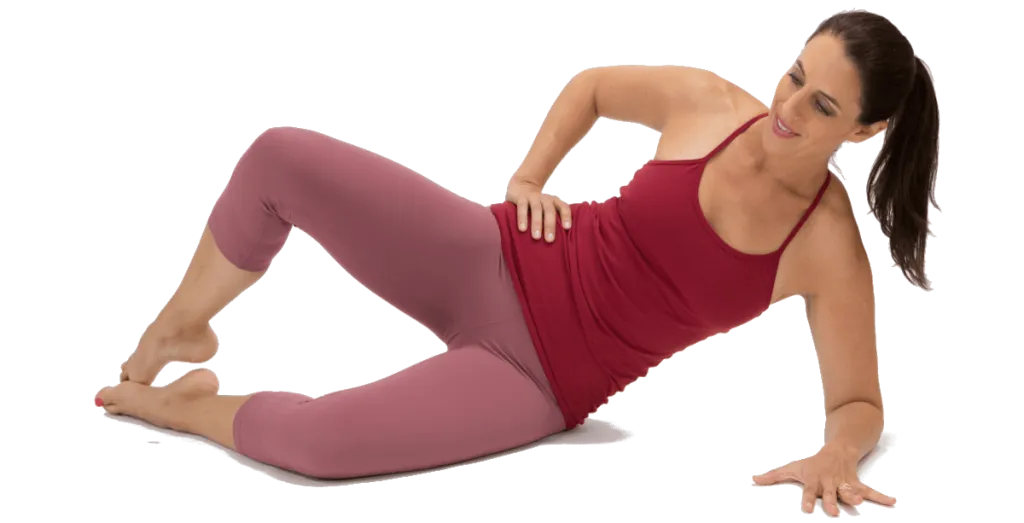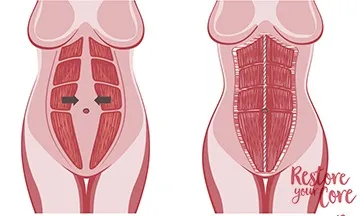Learn

Hi! I'm Lauren.
Nice to meet you
Lauren Ohayon is the creator of Restore Your Core® (RYC®), a comprehensive and sustainable whole-body fitness program that empowers women to achieve ideal pelvic floor / core function and be strong, long, mobile and functional.
Top articles
Is Diastasis Recti Preventable? | 5 Ways To Prevent Rectus Diastasis

Table of Contents
There is a lot of information out there concerning diastasis recti and whether or not it is “fixable” injury or preventable like in illness. The answers to these questions can be quite overwhelmingly different depending on who you ask. In this article I hope to answer your most pressing questions.
Diastasis recti is usually not a permanent condition and can often be healed through strategic core rehab. It does take time and it will require hard work and dedication on your end, but it is usually possible to close the gap. Your gap may not close all the way. Diastasis recti is still being researched, however, recent studies have shown that the focus for diastasis healing should revolve around restoring core function rather than closing the gap entirely. Meaning that a small diastasis recti can still be considered totally functional.
Preventing a diastasis is approached in a similar way, but it is not guaranteed to prevent one from occurring. Strategic and intelligent core exercising routines are your best bet to get the strong core you want without causing any injury. One of the main causes of a diastasis outside of pregnancy is improper breathing patterns and cheats in core workouts.
Get free expert advice and start your Diastasis Recti healing journey today
Exercises and Good Practices for Preventing Diastasis Recti
Diastasis recti can occur in more than two thirds of postpartum women, however, there are some ways to mend the condition and to help prevent its development.
- Pregnancy Prehab
- Postpartum Rehab
- Proper Diaphragmatic Breathing
- Practicing Good Posture – relieve intra-abdominal tension
- Healthy and Functional Core Engagement and Exercise
Testing for Diastasis Recti
If you are concerned you may have a diastasis recti, I recommend getting assessed by a PT or an OT before beginning any diastasis recti specific program; however, you can perform a self-assessment at home. The self assessment can be performed as follows:
- Lie on your back in a comfortable position. Bend your knees and place your feet flat on the floor.
- Place one hand on the midline of your core with your fingers pointing straight down on your abs.
- If you need support for your head, place your other hand under your head and neck for support. Slowly lift your head and add minimal pressure to your fingers placed on your core. With no diastasis recti, there is the feeling of a toned wall as you lift your head up. If you feel a gap, or your fingers sink into your core, you likely have diastasis recti. In very obvious cases, you can feel the sides of your core muscles in between that gap on the left and right sides.
- Repeat the process for the areas just above your belly button and below your belly button to determine whether or not the diastasis recti is isolated or in your core as a whole.
The severity of a diastasis depends on two factors: deep or shallow and width. A diastasis on 2.5cm or greater (2 or more fingers) is a wide diastasis, but can still be shallow. Typically a gap less than 2.5cm is considered okay- if it is shallow – but you should be mindful of it and consider intelligent core building routines to prevent the gap from widening.

If your gap is greater than 2.5cm (2 fingers or more), there is a chance that this gap is causing some issues. If you are experiencing any of the following:
- Bulge in your abdominal core
- Feeling of an Enlarged Abdomen
- Pelvic floor issues
- Abdominal gaping
- Pain in your lower back
Look into enrolling into a program like Restore Your Core® where I instruct you in correct core building strategies which can help eliminate many, if not all, of your symptoms. Below are a few exercises that I cover in my Restore Your Core® Program that help aid in core restoration and strengthening and, though diastasis recti specific, can potentially aid in preventing a DR from occurring or returning.
How Diastasis Recti Develops
There is no one thing that causes a diastasis to develop. A DR can occur for many reasons. One of the most common ways a diastasis recti occurs is through any activity that causes excess pressure on the abs and core. Like a pregnancy, chronic core tension, holding the core tight all of the time, limitations in movement of the torso.
Regarding pregnancy: 100% of all pregnant women have a diastasis recti: the abdominals stretch to accommodate the growing uterus. A diastasis recti is typically only a concern if your abdominal muscles have not recentered by about 6 to 12 weeks postpartum.
However, you do not have to have given birth in order to develop a diastasis recti. Although pregnancy is the most common cause of a diastasis recti, there are many other factors that play into its occurence. DR affects both men and women and even children equally. Many bodybuilders and athletes have a diastasis recti without even knowing it. Below are several ways a diastasis recti could develop:
- Multiple pregnancies
- Frequent or rapid changes in weight
- Weightlifting
- Certain core exercises
- Underlying Abdominal Illnesses (i.e. stomach cancer, or cirrhosis)
- Obesity
One thing you should keep in mind is that despite the various reasons a diastasis recti could occur, it is not an abdominal tearing. A diastasis recti occurs when the connective tissue between the two sides of your rectus abdominis (6-pack) muscles separate at the midline. This creates a gap in the midline of your abdomen anywhere from the pubic bone to the base of your ribcage. Although in more severe cases it is common for abdominal organs to be exposed, it is uncommon for there to be any organ damage.
Take 3 steps toward regaining your ability to do the things you love
Exercises & Good Practices
During your pregnancy, it is important that you consider some form of prehab or exercise routine that aids in maintaining a strong and functional core as your body goes through a major transition. In my program Body Ready Method®, we cover many exercises and techniques that assist you in this. Below are a few things to keep in mind during your pregnancy.
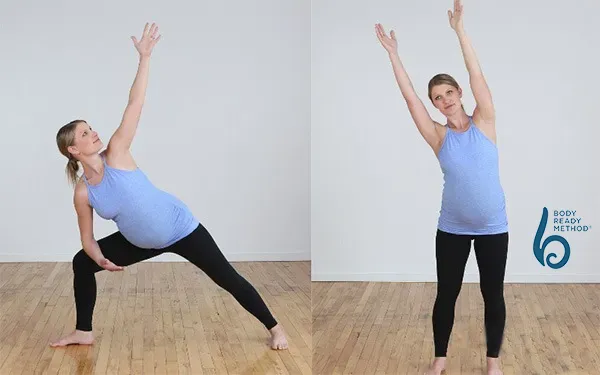
1. Practice appropriate breathing patterns
Though this may seem like a simple task, many people do not practice proper breathing patterns. 3D rib breathing, as opposed to belly breathing, helps limit the amount of stress and pressure that you add to your abdomen daily. Inconsistent or improper breathing can add additional pressure to your abdomen causing a diastasis recti. Many people are taught to belly breath, are taught that diaphragm breathing means belly breathing and have excess pressure on their core wall as a result.
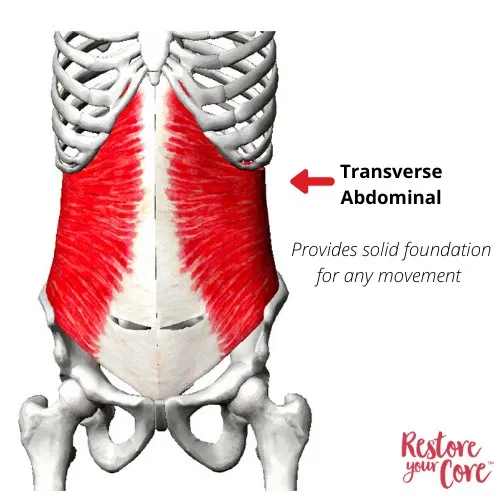
2. Practice good posture and free your abs from excess tension
While pregnant, it can be difficult to sit-up straight without straining your abdomen and lower back. The added weight in your belly can also allow for bad posture. When rising up out of bed, don’t sit straight up. This adds unnecessary pressure to your abdomen. When sitting up in bed or trying to get out, try either rolling over on your side before rising or focus on rising using your transverse abdominal muscles (those closer to your pubic bone).
3. Understand a good / healthy / functional core strategy
Approaching strength building and core function routines, it is important to do so smartly. There should be no compromises in exercise. In both Body Ready Method® and in Restore Your Core® I focus on strengthening your body effectively and efficiently in order for you to be able to workout without any compensation with great results. Click here for a list of tips and tricks to help relieve any symptoms you may have or for exercises to help correct any unhealthy patterns you may be following.
Strategic Core Exercise Has Shown Successful Results
Preventing a DR can be a bit tricky to wrap your head around. A common diastasis recti myth: having a toned, slim abdomen is the primary result of healing. This just isn’t true. Many athletes and bodybuilders have diastasis recti. Having a toned body does not equate to being diastasis recti free or immune.
The primary focus in healing a diastasis recti is helping prevent you from making common (but harmful) workout cheats and to correct problematic exercises that end up damaging your abdominals rather than promoting core function. The end result is a functional core through intelligent core rehab.
Many methods of avoiding diastasis recti development involve postural awareness, corrective exercises, and a conscious prehab approach during pregnancy. Yet, most of these are important to keep in mind regardless of whether you are male or female, pregnant or not.
- Understand a good / healthy / functional core strategy
- Practice appropriate breathing patterns
- Ensure your abs are free from excess tension
- Avoid exercises that increase focalized tension in the abdomen
- Practice good posture
Although diastasis recti is not completely avoidable in some cases, the list above helps paint a clear picture on how to protect your core while still staying active. The key is to be mindful of your body’s function and how to increase your functionality and build strength without causing harm to your body. It is possible to be active and functional without injury.
Discover the top 3 steps to heal your Diastasis Recti and get back to what you love
5 Exercises to Help Prevent Diastasis Recti

Candles / Core Engagement
Come to sit tall or stand. Inhale and on the exhale, imagine you are blowing out 100 candles. As you blow, you should feel your core tighten and draw inwards. This can and should be practiced whenever working out and managing a load, a weight, a core move. It automates the core and begins to integrate the function of the core to the activity that you are doing.
Seated Side Bend
Sit comfortably. Possibly on a block or some pillows. Hold a yoga strap or belt overhead. Bend your elbows slightly to take the stress off of your neck and shoulders. Exhale, blow candles, tighten your core and side bend right and then exhale to go left. Your core should not bulge, brace or push out as you do these. These are great for upper body mobility, torso length and strength are a great way to work your core without strain.
Twist
Sit comfortably. Possibly on a block or some pillows. Hold a yoga strap or belt in front of you. Exhale to blow candles, feel your core tighten and then rotate your chest to the right, come center and then exhale to go left. Your core should not bulge, brace or push out as you do these. These are great for upper body mobility and are a great way to work your core without strain. One of the keys to preventing a diastasis recti is to ensure that your upper body is mobile, supple and strong.
Side Balance
For this exercise, you will balance in a supported side plank. Your right knee and right hand down on the mat and your left arm straight up to the sky with your left leg straight on the mat. Use your candles for support as you exhale. This move is great for balance, arm and shoulder strength and a ton of core support.
Opposite Reach
For this exercise, you will come onto your hands and knees and slowly lift the opposite arm and leg. If that is too hard, do just one at a time. As you lift, you exhale and blow candles, feel your core engage and be extra sure not to bear down, brace or bulge your core! Amazing for your shoulders, arms, core and booty.
For more on these exercises. Click here.
Get 3 (free) scientifically-proven steps and begin healing your Diastasis Recti today!
After giving birth and being cleared for exercise (typically 6 – 12 weeks postpartum), it may be helpful for you to pursue core building exercises. These can either help prevent diastasis recti or help close the gap that may be a result of childbirth. Here are a few exercises that you can do at home.
Candles
Candles is another breathing technique that helps with ab contraction while limiting pressure in your abdomen. Inhale normally. On your exhale, release your breath slowly as if you were blowing out a lot of candles. If done properly, you should feel your abdominal muscles contract/respond.
Tabletop or Reverse Marching
Lie down similarly to that of a diastasis test. Exhale as you would with the candles method. As you exhale, alternate bringing your knees, while still bent, toward your body.
Goddess Side Bend
While standing with wide feet placement (knees aligned with feet, feet aligned with shoulders), exhale and bend your knees slowly until they are level with your ankles. Make sure you use your heels to stabilize your body. Side bend by raising your arm while maintaining resistance. Repeat side rotations 3x and then return to a standing position.
Goddess Squat Twist
Repeat steps outlined above but place your arms across your chest. While in the goddess position, twist by using your ribcage, not your arms. Repeat side twists 4x and return to a standing position
Lunge with a Twist and Chop
Practice lunging. While using correct posture, bring one leg forward and lift your hands, palms crossed, in front of your face. Then slowly begin to twist toward your forward leg. As you twist toward your forward leg, bring your arms across your thigh in a chopping motion. Repeat while alternating between sides and legs.
To learn more about these exercises, click here
Exercises to Avoid
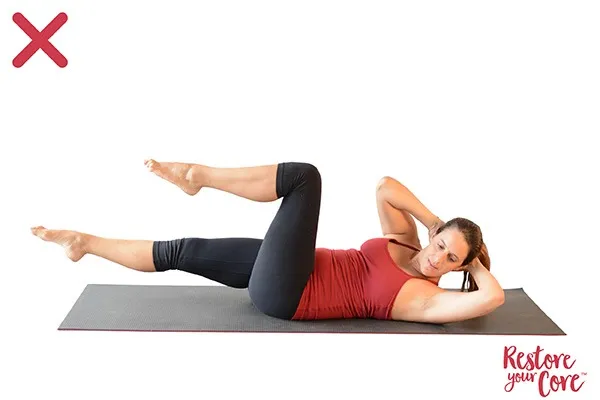
There are several daily motions and exercises you should avoid if you have a compromised core. In this case, you want to avoid any exercises or stretches that add additional or excess pressure to your abdomen. A few exercises to avoid:
- Most Crunches or Sit-Ups
- Full Push-Ups (they can strain the abdominal muscles)
- Any exercises that could cause your core to bulge.
I recommend avoiding any flat belly programs that focus on an aesthetic appeal over function. The purpose of these exercises is to strengthen and rebuild your core. Find comfortable movements that prevent your core from pushing out and practice proper breathing techniques. The goal is for healing and function so that you can accomplish the things you love to do without sacrificing your body.
Got questions?
Does Diastasis Recti heal on its own?
What exercises should be avoided with Diastasis Recti?
Can you fix Diastasis Recti without surgery?
Yes! There have been many women who have completed the RYC® 12 -Week program and seen their diastasis recti close considerably, if not all the way. It’s not only possible to heal diastasis recti without surgery – in many cases, you can also restore core strength and full-body function without the need for invasive procedures.
Can physical therapy fix Diastasis Recti?
What does Diastasis Recti look like?
Is a Two Finger Gap Diastasis Recti?
What problems can Diastasis Recti cause?
Does belly binding help Diastasis Recti?
Belly binding is thought to help close the Diastasis Recti gap by wrapping a binder around your torso. However, wearing a splint or binder won’t strengthen or tighten the muscles – but it might provide support for lower back pain and other issues related to pregnancy (or postpartum) and be an appropriate tool in the later stages of pregnancy and early weeks postpartum.
Is running OK with Diastasis Recti?
Is it belly fat or Diastasis Recti?
Does drinking water help Diastasis Recti?
Is Diastasis Recti a hernia?
Diastasis Recti, is not a Hernia. Clinically, a Diastasis can look like an Inguinal or Umbilical Hernia when flexing your abdomen; you may notice a bulge near the belly button.
Why does my stomach dip in the middle?
Can Diastasis Recti cause digestive issues?
Top articles
“There is no thank you big enough for Lauren Ohayon existing and thinking and helping so many of us. Every time I do something I never thought I’d do again she is part of the reason why.”
Laura Gregg
Learn 3 ways to heal your Diastasis Recti
in this FREE video and get the support you deserve
*10K+ women healed and healing

Thank you!
Your FREE video is on the way
Please check your email inbox in a few minutes.
Related articles
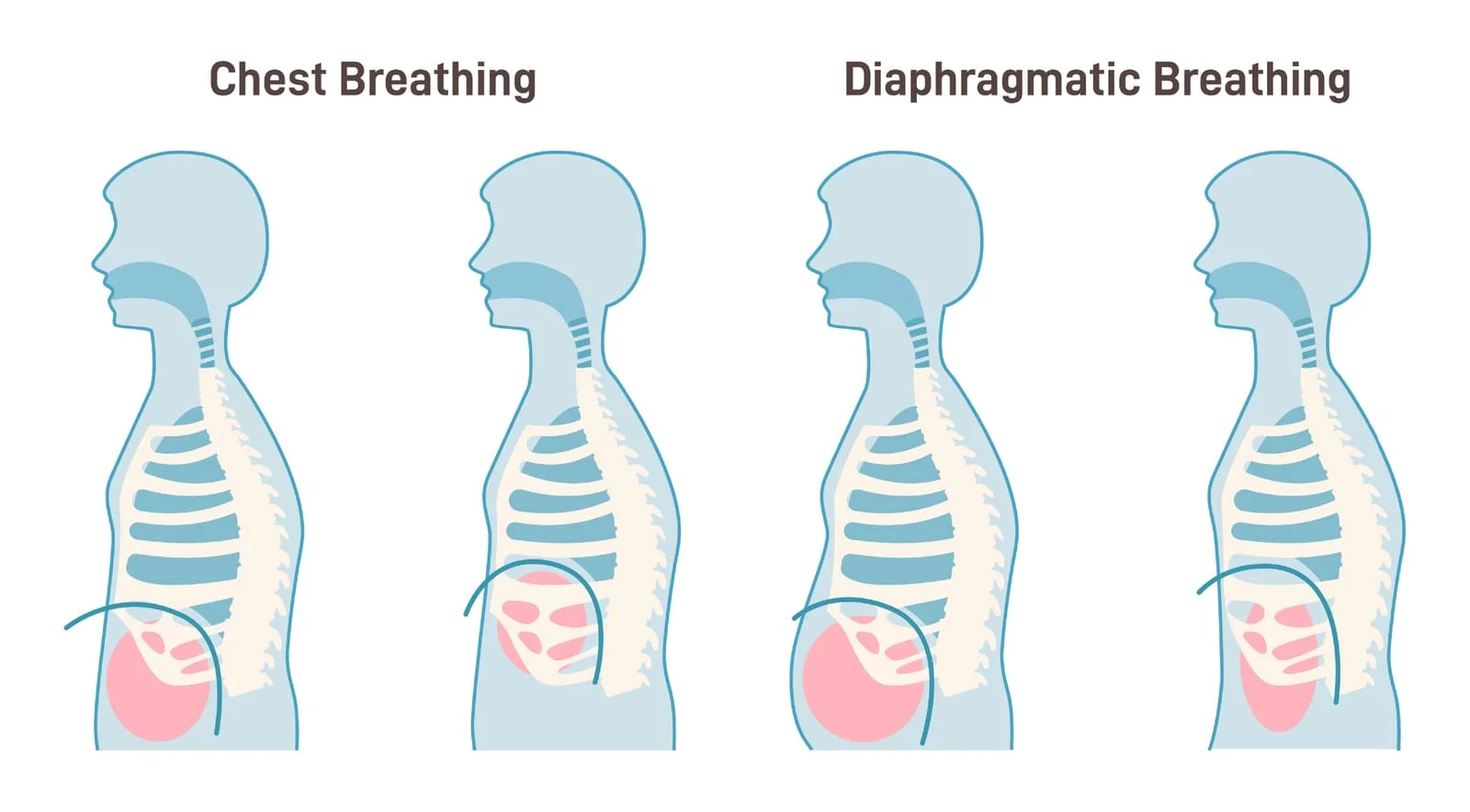
If you have diastasis recti (DR), you may notice a change in your breathing patterns or even experience shortness of breath. The connection between breathing and diastasis recti is significant...

Having a flat stomach with Diastasis Recti is a topic that comes up almost every week in the form of an email or a post in my Restore Your Core®...
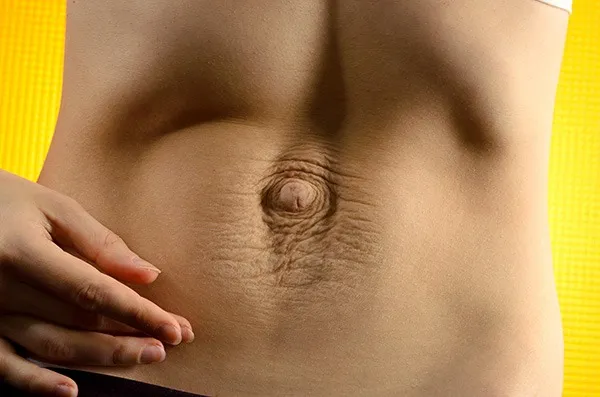
Healthcare professionals–including doctors, coaches, and doulas–have you been confused about how to help your patients and clients with diastasis recti? Is surgery the best and only option? Not necessarily. Read...

While it’s relatively easy to assess yourself for diastasis recti, what do you do about it? PT is great; pressing play on a video at home is even easier. Read...

If you’ve recently discovered that you have a diastasis recti, you might be wondering whether you can keep up your regular workout routine. With the right information, you can safely...

If you’ve been diagnosed with diastasis recti (DR), figuring out how to keep moving without making things worse is a challenge. Thankfully, DR is very responsive to targeted exercise. When...
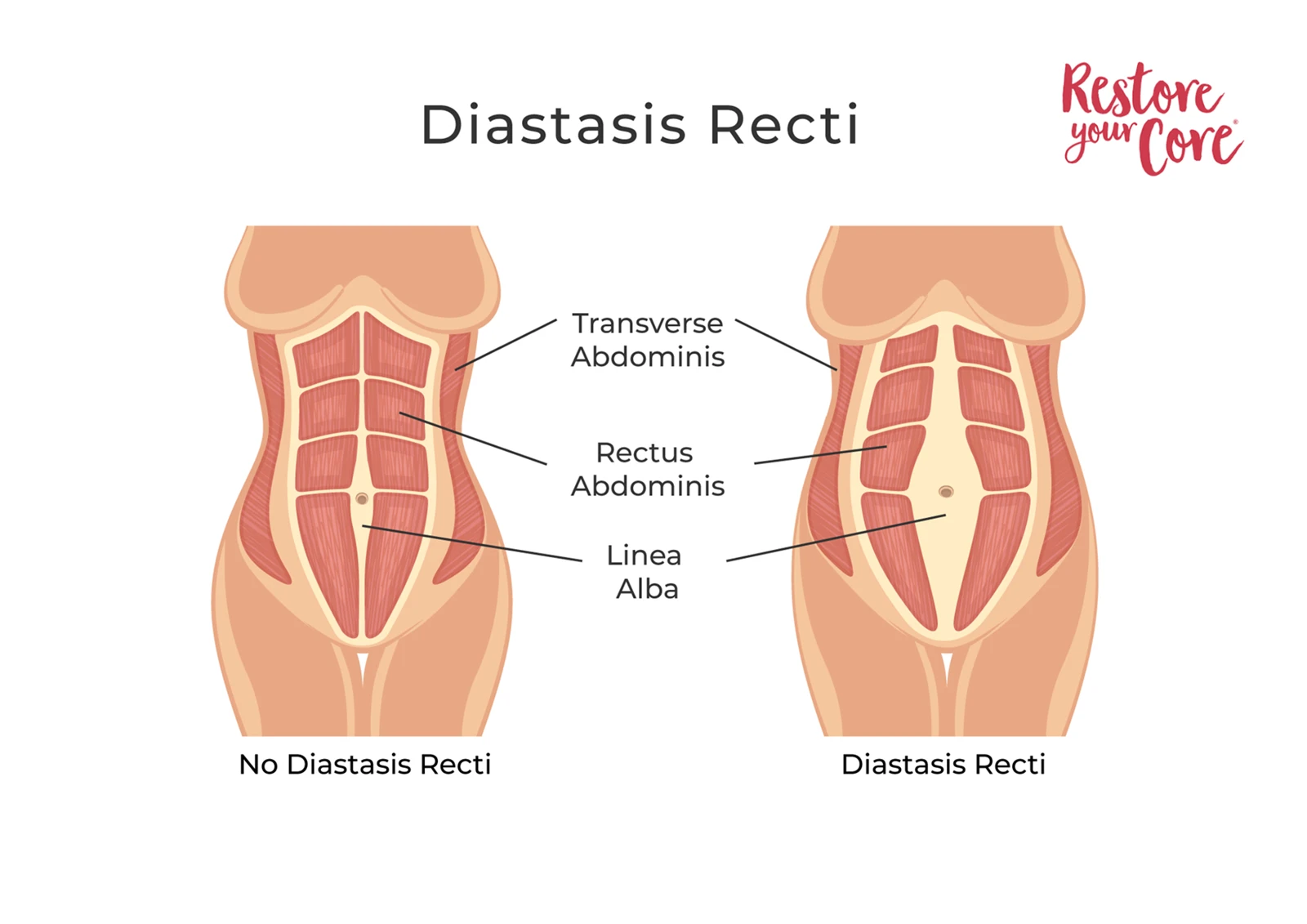
Although many people think of it as a postpartum healing problem, diastasis recti is not a strictly postpartum issue. Read on to learn how to effectively address and heal diastasis...

Diastasis recti is a complicated injury. Some people will go through rehab fully dedicated to restoring their core function and still have a gap. The truth is: diastasis recti is...
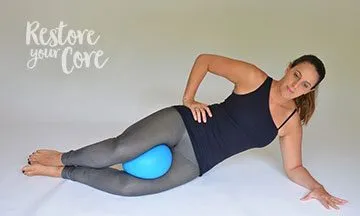
Diastasis recti is a common condition that can occur during pregnancy and even extend postpartum. DR affects women and men in different ways and during different stages of their lives....

Diastasis recti is a complex injury which depends on time and personal dedication to heal. The results of the healing process are convoluted at times. Many programs and health “experts”...
Discover the top 3 steps to heal your Diastasis Recti and get back to what you love
Get more actionable info, inspiration and exclusive offers delivered to your inbox.
*No spam, just quality content and support
Thanks for subscribing!
inbox soon.
Thanks for subscribing!
Please check your inbox soon.



